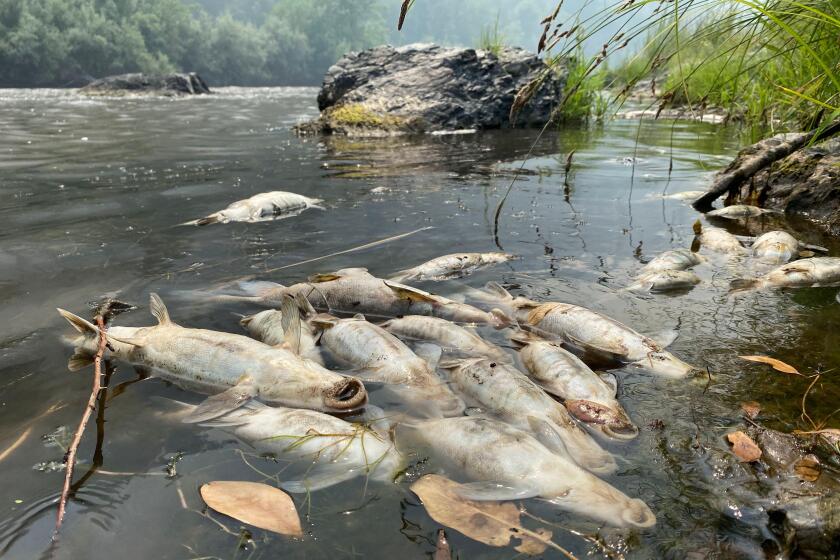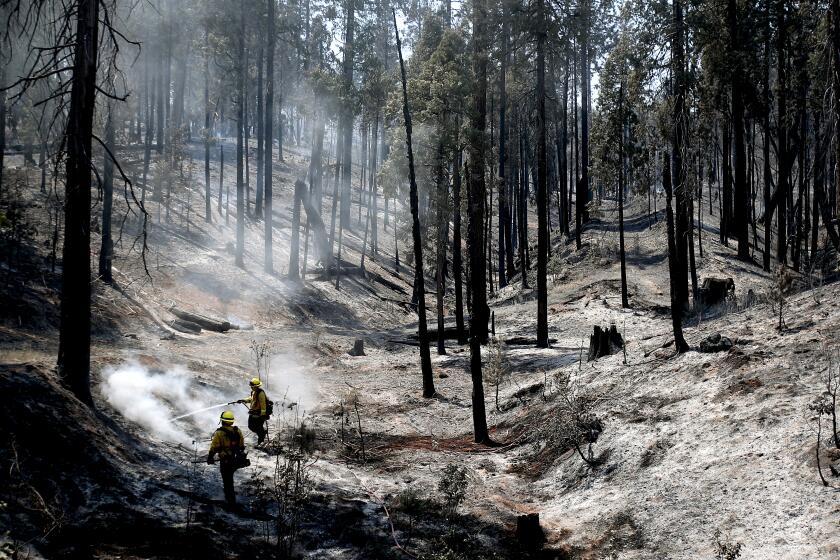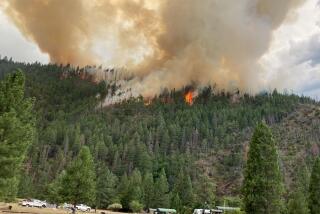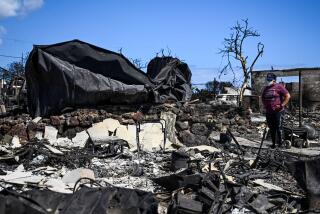California’s extreme wildfires taking lethal toll on elderly who can’t escape flames

Ronald Tyra knew it was time to flee when the 100-acre blaze across the street began igniting spot fires as it raced down the mountain. Tyra sped from his Klamath River, Calif., home with little more than the clothes on his back.
His neighbors — Charles Kays, 79, and his wife, Judith, 82 — were not so lucky. Only recently identified by authorities, their bodies were found in a burned vehicle near the bottom of their driveway. They apparently had rammed a locked gate attempting to escape and veered off the road, officials said.
The fast-moving fire would also claim the lives of two more Klamath River residents: Kathy Shoopman, 73, a veteran Forest Service fire lookout, and John Cogan, 76. Some say they were initially reluctant to leave their longtime homes even as officials urged them to evacuate.
Today, nearly a month after the McKinney fire ignited in Siskiyou County and grew to be the state’s largest wildfire of the year, experts say the deaths in this small unincorporated community highlight the growing vulnerability of rural seniors in an age of extreme blazes.
“Whether you’re looking at wildfire frequency, or you’re looking at the area burned by wildfires, the proportion of elderly people increases in a fairly linear way as you get into census tracts of higher risk,” said Shahir Masri, an environmental health scientist at UC Irvine.
Explosive growth of the deadly McKinney fire was driven by a perfect storm of extreme heat, dry vegetation, steep terrain and erratic winds.
Not only are older people more likely to suffer from chronic illnesses or disabilities that limit mobility — making it more difficult to escape a raging fire — Masri said they are also more likely to live in rural areas, where job opportunities are scarce but living expenses are generally lower. These are also the areas that bear the brunt of the West’s increasing wildfire risk, according to a paper Masri published last year in the International Journal of Environmental Research and Public Health.
The tragedy recalls the toll of California’s deadliest blaze in 2018. The majority of the 85 people who died in the Camp fire were over 65, prompting calls for emergency preparedness strategies to better target seniors who live in areas of high fire risk.
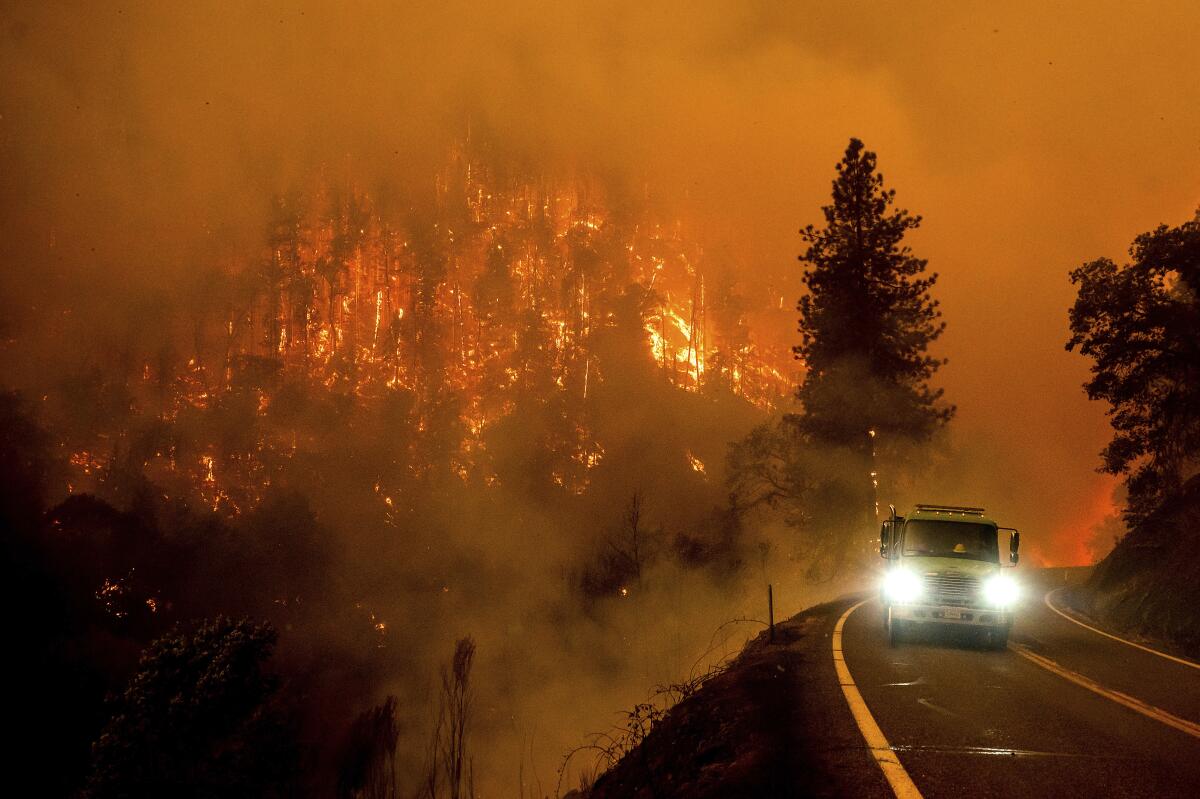
In Siskiyou County, nearly 27% of residents are 65 or older, compared with about 15% of residents statewide, according to U.S. census data. Much of the county, including virtually all of the Highway 96 corridor where the blaze destroyed homes, is considered a very high fire hazard zone.
Recognizing this, the county sent deputies or firefighters to each of the roughly 800 homes that were ordered to evacuate, said Bryan Schenone, director of the county’s Office of Emergency Management. They also checked a countywide registry of vulnerable people who need more help to leave and sent buses and ambulances to a mobile home park and assisted living center in Yreka, he said.
Still, he said, authorities cannot force people to leave if they choose to stay behind.
Some Siskiyou County residents have lived in the area for 60 or 70 years and have seen many fires come through, Schenone said. Those past experiences might make them think they can weather the crisis.
But today’s fires are fundamentally different from those that burned decades ago, officials say.
Flash flooding in a Northern California burn scar triggered a massive debris flow that is now suspected of killing scores of Klamath River fish.
“We’re definitely seeing conditions change over the last several years to where fires are burning more intensely and getting larger quicker,” said Heather McRae, deputy fire management officer for Klamath National Forest. “It’s not like it used to be as far as fire behavior goes.”
The McKinney fire started in a meadow near a PacifiCorp power distribution line the afternoon of July 29. A cause hasn’t officially been determined, although a lawsuit filed on behalf of residents alleges power equipment was to blame.
Stoked by record heat and dense, dry vegetation, the fire reached an area of heavy timber that hadn’t burned in 100 years. It was then blown in all directions by thunderstorm winds, McRae said. Structures in the Klamath River area were destroyed within hours, authorities said.
Cogan was in his home on Highway 96 with his niece, Sherri Marchetti-Perrault, as the fire intensified. The property was included in the first round of evacuation orders issued a little over an hour after the fire was first reported. He chose to stay behind despite the encroaching flames, Marchetti-Perrault said.

“When we left, everything was on fire,” she said. “It happened so fast.”
Marchetti-Perrault later returned to the property and saw her uncle’s remains, she said.
Shoopman was contacted about evacuating that first night.
“She had a home there that she’d stayed in for 50 years, and when she was asked to evacuate that first Friday night, she just said she’d be more comfortable staying,” said Rachel Smith, the Klamath National Forest supervisor. Other officials said Shoopman may have been trying to leave when the fire reached her.
Shoopman, who had been at her current post at Buckhorn Lookout since 1993, was legendary for being able to pinpoint a blaze’s exact location so firefighters didn’t have to go searching for smoke, a skill that won her Klamath’s lookout of the year title in 2015, said Jennifer Erickson, a Forest Service public affairs officer. Her unique voice was beloved by many who had become accustomed to hearing her check-ins and smoke size-ups over the radio.
“She was really a part of this forest,” Erickson said.
Klamath National Forest was on a heightened alert when the fire began because forecasts were calling for lightning, McRae said. Helicopters and air tankers responded quickly, establishing retardant lines that looked as if they would hold.
But then thunderstorms developed. The wind-whipped fire produced a massive pyrocumulonimbus cloud that soared skyward at least 39,000 feet and generated its own thunder and lightning storms, according to the National Weather Service.
The situation became dire, forcing crews to shift from containing the fire to evacuating and defending structures.
“Whenever there’s a thunderstorm around an existing fire, it’s very dangerous, because you get these updrafts and downdrafts from the thunderstorm itself, and you can generate really, really sporadic high-velocity winds,” said Scott Stephens, a professor of fire science at UC Berkeley. “And I think that’s one of the reasons why, unfortunately, four people got caught.”
As crews battle the deadly McKinney fire, some residents blame the state and federal governments for failing to properly manage local forests.
And there were other factors, he said, including the combination of extreme drought conditions and overgrown vegetation that can make it easy for embers to ignite and spread. A history of logging and fire-suppression policies has also resulted in stands of unnaturally young, dense timber that is more susceptible to fast-moving crown fires, according to experts.
“The legacy of both removing Indigenous burning and also fire suppression have really set these forests up for catastrophic change,” Stephens said.
In the past, fires would lie down a little at night as temperatures cooled and humidity increased, giving firefighters an opportunity to catch up, McRae said. But the McKinney blaze continued to burn actively as night fell, with the darkness and storm activity also grounding aircraft.
“I think it caught our firefighters off guard and the public, too, as far as how quick it spread,” McRae said.
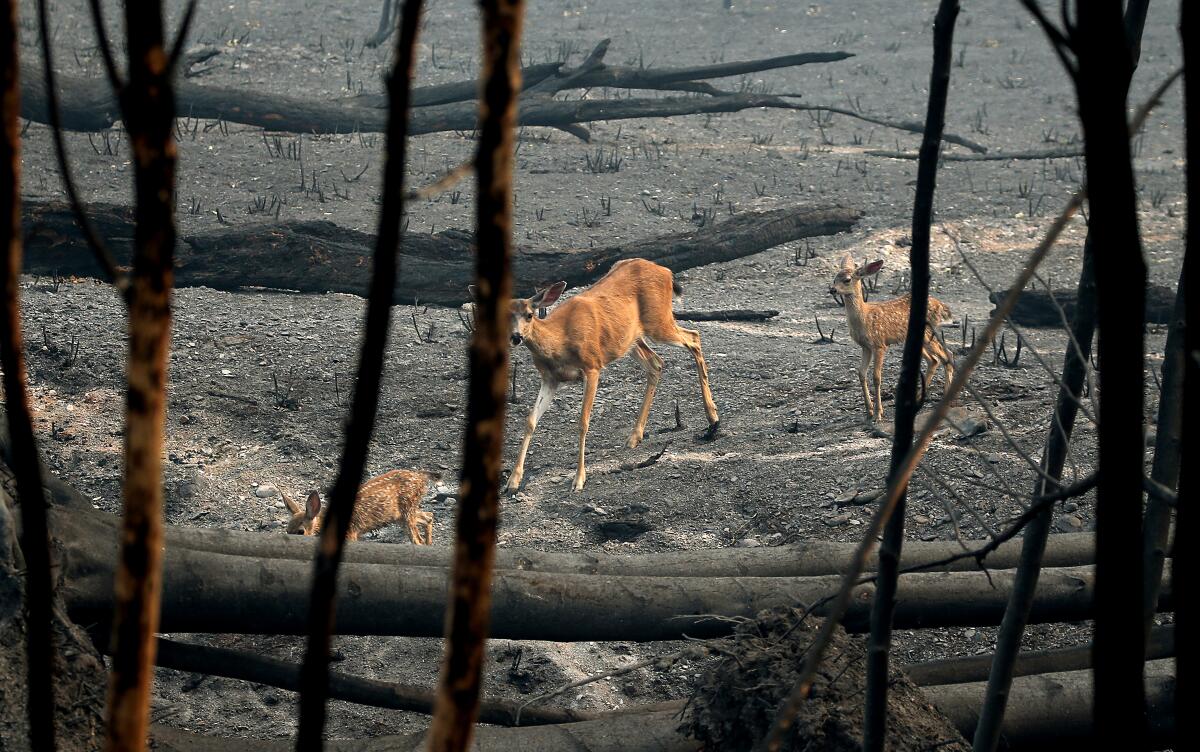
Some residents were also adjusting to changes in the county’s evacuation system. For years, Siskiyou County has used a rapid notification network called CodeRED, which allows people to sign up to receive emergency alerts on their cellphones or landlines.
Last year, the county also started using a platform called Zone Haven to help with evacuations. Each home is placed within a zone denoted by three or four letters and four digits. Residents are encouraged to learn what zone they live in by entering their address online, and to leave when their zone is evacuated.
Some residents said the zone system is confusing.
“It unfortunately makes sense that the people that are affected the most by the fires are the people that are older because they aren’t as technologically savvy and then they take longer to evacuate as well,” said Mary Bozzacco, a project manager for a local wildfire mitigation project run by the nonprofit Community Organized Relief Effort.
Schenone acknowledged there was some confusion and said he’s planning an outreach push to educate residents about Zone Haven. The county also sent out evacuation alerts through CodeRED; the FEMA Integrated Public Alert Warning System, which blasts notices to all landlines, radios and televisions in affected areas; and Rave, a warning and alert system similar to CodeRED recently purchased by the state of California, he said.
Why was the Oak fire so much more destructive than the Washburn fire? Experts say it’s because of weather, terrain and forest management.
Tyra, 68, a registered nurse, has both a landline and a cellphone but said he was not aware that he had to sign up for certain services. He chose to leave his home several hours before evacuation orders were issued.
“I’m just thankful that it was not in the middle of the night,” he said. “Because I don’t even know what kind of warning we would have gotten.”
Drawn by the prospect of a mountainside retirement home with breathtaking views, Tyra moved to the area four years ago. The fire destroyed his house and everything in it, and he’s now faced with the prospect of having to start over. Though he’s devastated, he’s not surprised.
“That’s the story of life in California, right?” he said. “Especially when you live remotely.”
Times staff writer Haley Smith contributed to this report.
More to Read
Start your day right
Sign up for Essential California for news, features and recommendations from the L.A. Times and beyond in your inbox six days a week.
You may occasionally receive promotional content from the Los Angeles Times.

